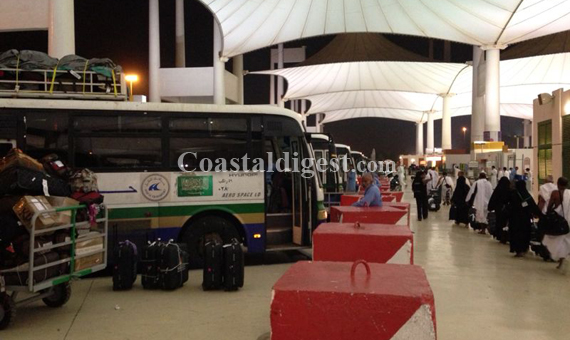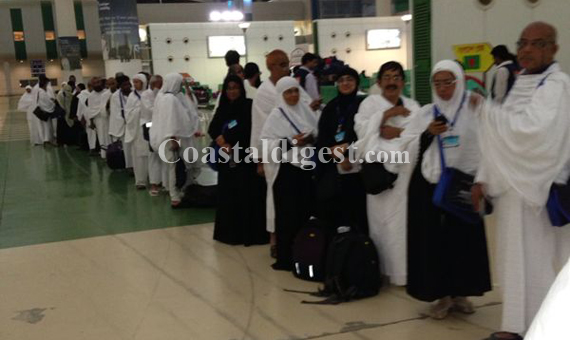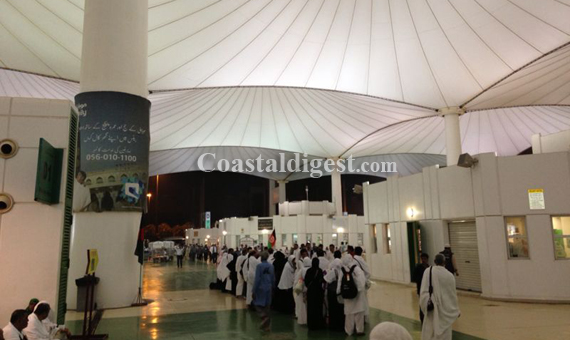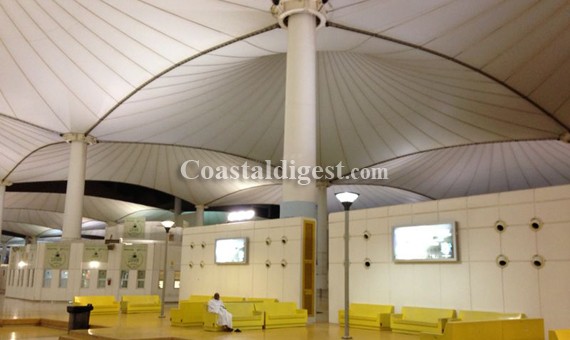The pilgrimage takes place each year between the 8th and the 13th days of Dhul-Hajj, the 12th month of the Muslim lunar calendar.
The sprawling 120-acre Haj Terminal at Jeddah's King Abdulaziz International Airport (KAIA) marks that the final destination is just a few miles away.
The Hajj Terminal, the one used by pilgrims, is estimated to be at least five million square feet (465,000 m²), making it the world's second largest air terminal, after Hong Kong International Airport terminal. It is known for its tent-shaped roof with its 210 “stunning” white fiberglass tents that have a cooling effect on the hot desert air. This terminal has a mosque, and it can accommodate 80,000 travelers at the same time.
Under each set of a tent-like structure, facilities are located for the pilgrim to rest and sleep. Arrangements are made to provide prepared food for the pilgrims but if a pilgrim wishes, he/she can cook for themselves too.
In addition, many wash areas have been provided in each set, as well as offices providing banking, postal, airline, bus and taxi, and general information support services.
It is estimated that the terminal complex accommodates 50,000 pilgrims at one time for period up to 18 hours during arrival and 80,000 pilgrims for periods up to 36 hours during departure.
Terminal is a hive of activity, but what is startling is in the manner in which everything is organised. Many arrival halls set in a row, each hall being set aside for handling of a particular incoming flight's passengers in batch mode and are colour-coded.
Once you are out of the air-conditioned customs and immigration hall, you will be under a huge tent structure which is a mini city on its own.
It is here that each batch of arriving passengers is subdivided into groups according to the nationality indicated on the passport and subsequently assigned to the respective Muassassas office.
Your passport will now have a little booklet which has coupon stickers. The booklet of coupons is actually a receipt of the “transport service draft”, which can be used for the internal transportation during the hajj.
During all these process hajis will not have the trouble of carrying their luggage. Luggages will be identified by haji's before they board the bus and will be loaded to same bus.
From there Hajis will move to Muassassas office where they will be welcomed with dates and will be given identification wristbands.
You will encounter odd delays in some places, which can be quite frustrating, leading to fraying of tempers. Please, exercise extreme patience! We have to loud the efforts being exerted by the Saudi government under the leadership of King Abdullah, Custodian of the Two Holy Mosques, to provide full and comprehensive care to all pilgrims. They are continuously upgrading facilities and services for the pilgrims' ease and comfort.








Comments
Add new comment